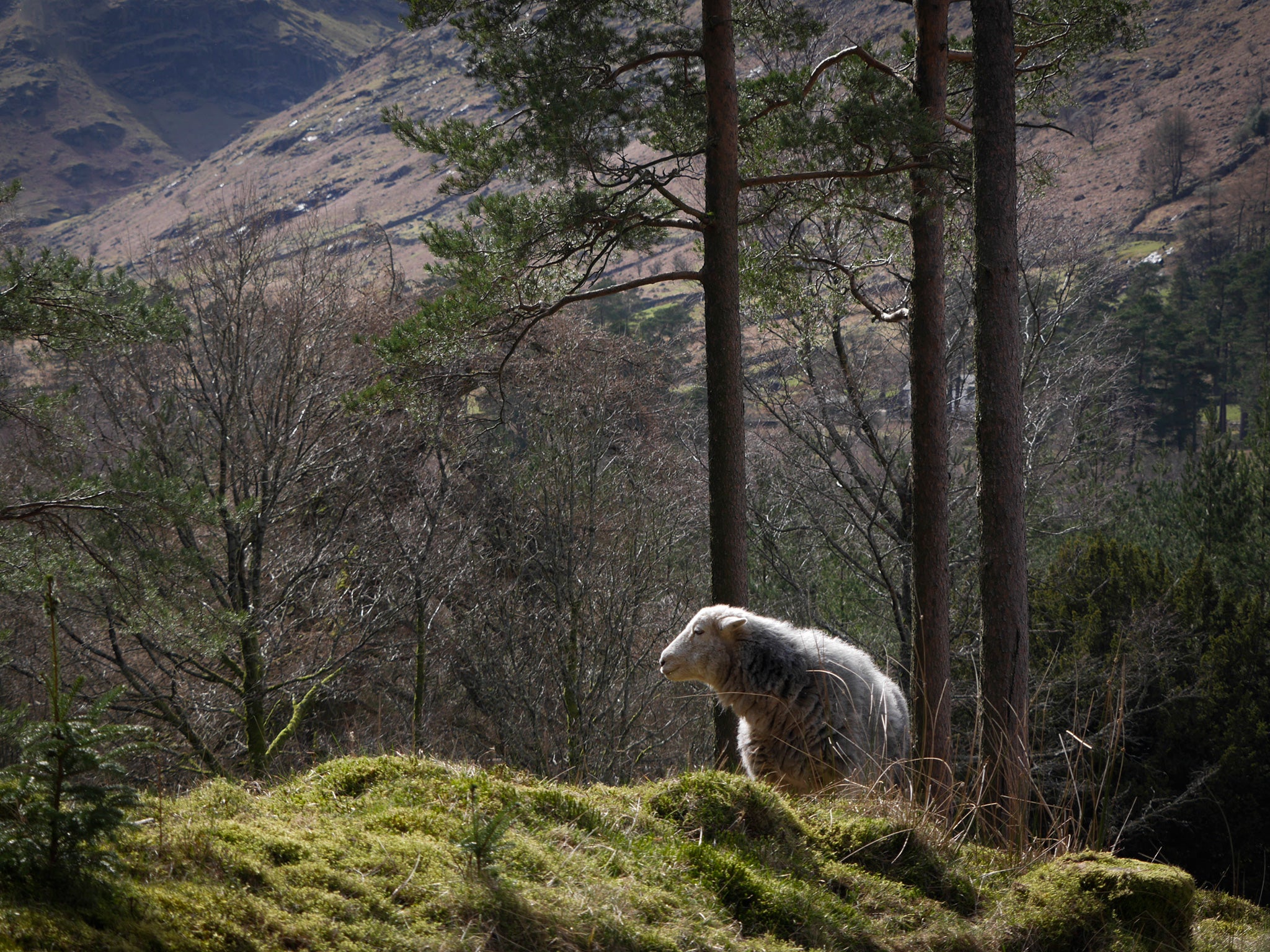Herdwick sheep’s Lake District habitat under threat from utility company
United Utilities wants to build a six-mile fence enclosing 866 hectares of land to prevent peat contamination of the water caused by overgrazing

For many hundreds of years the hardy and distinctive grey-fleeced Herdwick sheep have roamed freely on the Lake District’s rugged terrain, grazing on the largest patch of common ground in Europe unfettered by the interference of humans.
All this is about to change, as a contentious plan by a utility company threatens to stop the sheep in their tracks.
United Utilities, the largest water company listed on the London Stock Exchange, wants to build a six-mile fence enclosing 866 hectares of land above Thirlmere reservoir to prevent peat contamination of the water caused by overgrazing. The proposal would fundamentally alter the traditional hefting system, which allows communal shepherding on the land without fences or walls.
It has lodged a planning application, which will be considered at a public inquiry, for a fence running along the boundaries of commons including Whelpside, Steel End and Wythburn Fells.
Looking at the tranquil stretch of water between Grasmere and Keswick, it’s far from obvious that the apparently natural reservoir is in fact man-made. It has provided drinking water to the residents of Manchester since the late 19th century. RAF fighter jets occasionally pass low through the valley, creating a sudden, deafening roar that can startle ramblers and cyclists. But otherwise this is an idyllic setting, where tourists pause regularly at the water’s edge to photograph the stunning landscape, scattered with scree and snow-dusted fells that are mirrored perfectly in the reservoir’s surface.
The sheep on the hills above are an integral part of this scene. But campaigners say the fence threatens not only the common land but the Herdwicks that graze on it, arguing that they will be at risk of becoming an endangered species if they are penned in. Having learned over hundreds of years how to graze freely in family groups and find shelter of their own accord without the need of shepherding, the animals’ now-innate behaviour could be stopped.
Amanda Carson, secretary of the Herdwick Sheep Breeders’ Association, said hefting was such a sensitive way of farming that “if it’s interfered with, then the whole system breaks down”.
The Open Spaces Society wants more protection of open land as it fears it could set a precedent for other common areas across the UK, and it objects strongly to the intrusion into the wild and unspoilt landscape. Kate Ashbrook, the society’s general secretary, said the “dreadful” fence would have a devastating impact on other common land. She said it might also breach legislation dating back to 1879 when Thirlmere was created.
The Lake District National Park Authority said upland common land and associated land management practices were “an important special quality of the Lake District”.
In pictures: The Lake District
Show all 7United Utilities has urged people to “take a closer look” at the plan before making up their minds. Although it has refused to comment again while the planning application is before a public inquiry, the company’s biodiversity officer, John Gorst, said earlier this year that the fence would simply exclude livestock from an area affected by overgrazing.
“It absolutely isn’t our intention to hamper people’s access or enjoyment but what many probably don’t realise is that, although beautiful, the Thirlmere valley is not working the way nature intended,” he said. “We’re trying to encourage natural vegetation which has been over-grazed for many years to regenerate and hopefully restore habitats like blanket bog, which is natural to the valley.”
But the Friends of the Lake District group said alternatives to the fence, such as woodland planting and stock reduction to improve water quality, should be considered. It described the fence proposal as “perhaps one of the greatest threats the Lake District has faced to the traditional openness and freedom of the fells in recent years.”
Andrew Denley, the secretary of the Borrowdale Shepherds’ Meet, said that if the Herdwicks continued to be taken off the fells they could become another “rare and endangered species”.
Subscribe to Independent Premium to bookmark this article
Want to bookmark your favourite articles and stories to read or reference later? Start your Independent Premium subscription today.

Join our commenting forum
Join thought-provoking conversations, follow other Independent readers and see their replies